Today I would like to introduce you to an excellent series of articles by a LEGO fan from the UK, who goes by the name Big Sal. The reason I like these articles is because they address some very common misconceptions, rumors, or beliefs about LEGO that are either not true at all, are only partially correct, or true for some time periods but not for others. So let’s take a look if what we remember from our childhood is actually true. 🙂
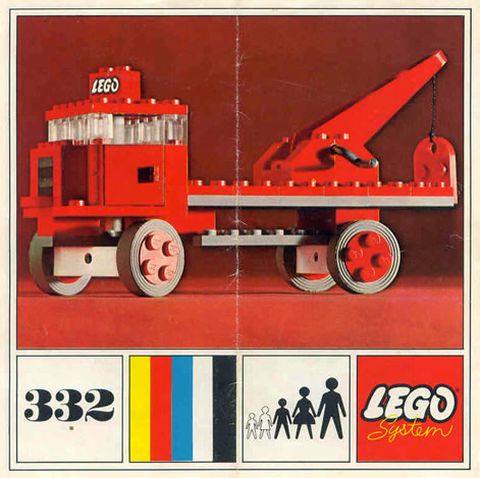
As an introduction to these three articles Big Sal writes: “If there are three things you’re guaranteed to see in the comments section of any mainstream news or comment article about LEGO, it’s these: “When I was a kid, it was all just basic bricks”, and its related cousin, “All the sets come with instructions these days, and you can’t make anything else with them”, and “LEGO is too expensive these days”. Is this a problem? That depends on whether or not these claims are true…”
➡ IT WAS ALL BASIC BRICKS IN MY DAY – PART 1: In the first article Big Sal takes a look at the claim that more sets come with instructions than in the past and/or you can’t get basic brick boxes/buckets these days. This is something that you see extremely often on social-media websites where people leave comments about LEGO. It’s is especially surprising because LEGO sets with basic bricks have always been available. My suspicion is that this misconception has a lot to do with how LEGO sets are displayed on store-shelves. While at official LEGO shops you will find the full selection of what LEGO has to offer at any given time, department stores have limited shelf-space and will focus on the LEGO sets that sell the best.
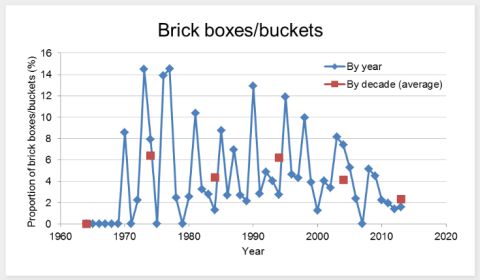
I have also noticed an interesting phenomena where while older people complain that in their days LEGO was more simple and creative, given the choice (and when nobody is looking) they will pick the more advanced and complex sets. I have recently saw this at Toys’R’Us where a couple with two elementary-school age boys were talking to a store employee complaining about the store’s LEGO selection, and that in their days there were only simple brick boxes which were much better and much more educational. After hearing out their accusations, the nice employee promptly walked this couple over to the LEGO Classic sets, which only include basic elements. The store had a full selection of the LEGO Classic and LEGO Creator sets, so it became obvious to the couple that there was nothing to complain about. They thanked the employee, and put two of the LEGO Classic sets in their cart. But than the dad turned and saw the LEGO Galaxy Squad sets and he exclaimed “Look at that spaceship!” Both him and the two boys were talking excitedly and looking at the different sets. About ten minutes later this same family was behind me in the checkout line. Gone were the two LEGO Classic basic brick boxes from their cart, and they were replaced by LEGO Galaxy Squad and LEGO BIONICLE sets. 🙄
So while basic LEGO brick boxes have always been available they are often outshined by themed sets, and perhaps this is what gives people the impression that they are no longer in production. Perception is a very interesting thing and can definitely mess with how and what people remember. In his article Big Sal will show you in detail with numbers and charts the ratio between basic brick sets and themed sets, as well as how many sets came with and without instructions through the years. His research and conclusions are very interesting. You can read the full article at the following link: IT WAS ALL BASIC BRICKS IN MY DAY – PART 1
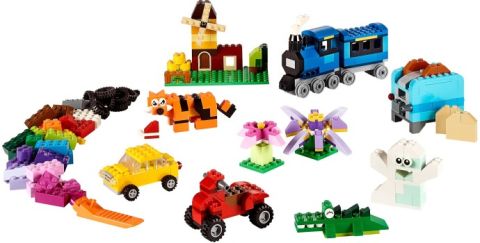
➡ IT WAS ALL BASIC BRICKS IN MY DAY – PART 2: In this part Big Sal looks at the claim that sets these days are filled with specialized pieces that can only be used for one thing. If you hold this belief it is worth browsing through the earliest LEGO sets in the BrickLink catalog. You will be surprised by how many specialized pieces appear in the earliest LEGO sets. In fact, some of them like trees, vehicles, and people don’t even look like LEGO by today’s standards. In addition LEGO fans with a creative mind will always find multiple uses even for those LEGO elements that seem to be specialized. However it is still worth looking at the ratio of LEGO elements that are so specialized they were only included in a few sets, because it can tell us about LEGO’s fascinating history. Here again Big Sal included some very helpful charts and other data. You can read the full article at the following link: IT WAS ALL BASIC BRICKS IN MY DAY – PART 2
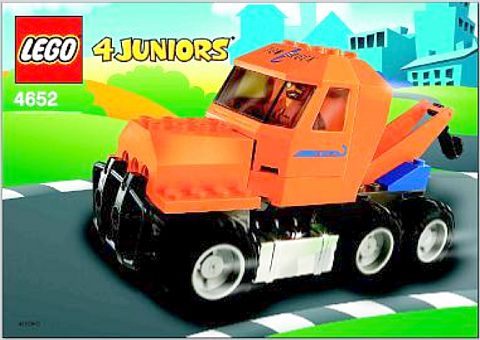
➡ IT WAS ALL BASIC BRICKS IN MY DAY – PART 3: In this article Big Sal summarizes his conclusions with a few more interesting charts to show you that LEGO sets these days are not full of overly specialized parts, but are in fact the least specialized they’ve ever been. After a bumpy ride in the 90’s and early 2000’s when LEGO almost went bankrupt, much stricter controls have been put in place to streamline LEGO set design and production, and thus LEGO designers can now only use standard universal LEGO elements and can only introduce a limited number of specialized parts per new set or theme. There are some other interesting thoughts Big Sal shares here to conclude his research. You can read the full article at the following link: IT WAS ALL BASIC BRICKS IN MY DAY – PART 3
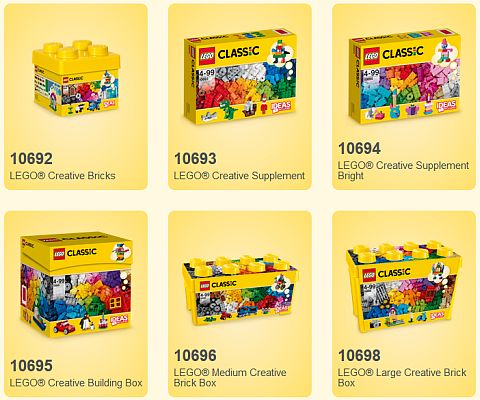
To help with the persistent claim that LEGO no longer offers basic brick boxes, LEGO recently launched (or more accurately; re-launched) the LEGO Classic line. Previously these basic bricks sets were listed under the LEGO Creator theme, which include a great variety of sets. So to make shopping easier, now all basic brick boxes are under the LEGO Classic theme. This should make it much easier to remember them and ask for them while shopping. And if you are looking for other sets that include mostly basic models, I would also recommend the LEGO Creator 2-in-1 and 3-in-1 sets which contain several alternate models, and the LEGO Minecraft line that mostly include basic bricks in earth-tone colors. You can find them all at the Online LEGO Shop at the following links:
- LEGO CLASSIC AT THE ONLINE LEGO SHOP
- LEGO CREATOR AT THE ONLINE LEGO SHOP
- LEGO MINECRAFT AT THE ONLINE LEGO SHOP
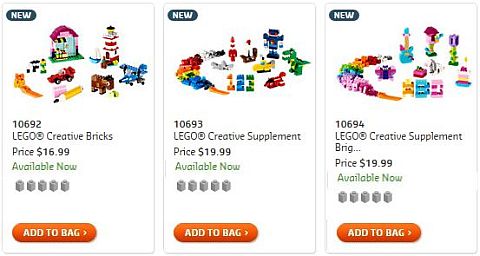
So what do you think? Did you find the articles by Big Sal interesting? Anything new that you have learned you didn’t know about? Do you prefer to build with the most basic LEGO bricks, or do you like to work with more interesting LEGO elements? Feel free to share your thoughts and discuss in the comment section below! 😉
And you might also like to check out the following related posts:












First, ha I hear adult say this all the time, but me with my geek knowledge of Lego no better, and I polity tell them. Besides even when the first Lego brick sets came out they already had windows and wheels.
Yeah, good to be aware of LEGO’s history and correct those misguided grown-ups. 😉
Well, the first brick sets seem to have come out in 1949, according to Brickset (although that was before ABS), but the first Lego-compatible wheels only in 1961.
Hmmm, wheels might have appeared already in 1959 in this beautiful masterpiece.
https://www.bricklink.com/v2/catalog/catalogitem.page?S=vwkit-1#T=S&O={%22iconly%22:0}
What a lovely set! 😀
Ok. I own a used Lego store. I was the first, in 1997 (copy write 1997) to teach Lego classes and do birthday parties so I know Lego. I didn’t have a store, I taught in schools and did home parties. (I was copied by another nameless company in 1998). I rebuild sets, old and new, and the new sets are almost entirely new parts and few basic bricks. Lego puts out over 1000 new parts each year and I feel it big time when a part is missing out of a set or mini figure b/c I don’t have another one in the entire store. We are constantly sorting to find those rare, one-of-a kind pieces to fix our sets to let those who can’t afford new sets, buy built once sets or bulk. We put plenty of bricks in our bulk b/c my focus is teaching (and focusing on girls more now with our buildings and girls-only classes) not retail. No one wants used sets unless they are collectors so they don’t care about the bricks. In fact, I encourage the customers to buy the bulk to be creative but most just want NEW sets. They don’t want them used. They want the NEW BOX which they promptly toss I’m told. Who knows.
Thanks for listening.
You raise an interesting point. As a buyer for moccing/freebuilding I almost always bulk buy collections.
I used to buy new but now mainly buy 80s/90s as long as they arent discoloured. When i started looking at 70s sets I noticed exactly that. If it wasnt castle or space it was very cheap.
I now have a vast array of the more unusual pieces but have hit the same snags by missing piece x on numerous occasions and they are v. Expensive to source especially if you want just the one piece
Thanks for the write up! 🙂
I’ll keep an eye on these comments in case anyone has any questions or suggestions for me.
I am starting to notice that people want more of the license sets than the basic sets (city, pirates, and castle). I think it started with the STAR WARS theme. But, at that time LEGO wasn’t as popular as it is now. I wonder if LEGO is focusing too much on the licenses themes as to the basic themes? I mean LEGO I’m sure will always make city sets and so on . But, I am wonder if their looking to much to the future and forgetting the past and what got them started in the first place. It is a business and you have to go with the times I understand that. What is your thoughts on the matter?
LEGO just released the LEGO Classic sets this year. They are not forgetting their past, and have always offered basic sets and brick-boxes, and by releasing LEGO Classic, they have put even more emphasis on them. However as you said, people demand the licensed sets and in general those are the ones that bring in the sales. I shared the other day when I was reviewing the LEGO Classic sets that people often bash LEGO from some high moral ground, saying that they are not offering basic sets any more, but when given the choice, these very same people choose the themed and licensed sets over the basic brick boxes.
There is another issue why LEGO needs to produce their own themes and licensed product; copyright. LEGO doesn’t own the copyright for basic LEGO elements. Anybody can make them. Thus all the competing brick-brands that you see on store shelves. Without LEGO making their own themes like Ninjago and Chima, and collaborating with franchises like Star Wars, Super Heroes, etc. they would be pushed out of the marketplace in no time by brands who are willing to compromise quality, and can sell their products cheaper.
The demand for branded products is not just a problem for toy-manufacturers. It is all around us in films, music, clothing, cars, and everything else. The majority of people no longer want creative products, they want instant gratification with known brands. Based on corporate reports I read in the most recent LEGO Life Magazine (which is an internal magazine for LEGO employees), LEGO is very aware of keeping a good balance between basic sets, their own story-based sets (like Ninjago, Chima, Elves, etc.), and licensed products. They have no plan to deviate from the consistency and timelessness of their products, as this is exactly what’s keeping them popular and ever-fresh with new generations. LEGO is like Nutella; no need to change the recipe. 😉
First off , thank you admin for your response . Secondly, I wasn’t trying to bash LEGO about there choices of licensed products they put out. I just see more and more themes (movies, cartoons) sets that go off the shelves more so, than other sets . As for me , I buy a little of both. But, I am trying to focus on city, castles and space themes. As we all know addiction has no preference to what you get in LEGO as long it is LEGO. …agreed .
Yeah, that’s my experience too. And this is probably why stores don’t carry many of the basic sets – the licensed sets just sell better, and this gives the impression to some people that LEGO doesn’t carry basic sets. But they definitely do. I also like to get a little (well, a lot, if I’m being honest) of both licensed and non-licensed sets. My favorites are also Space and Castle. And fantasy. 🙂
The hardest for me is waiting for the next wave of LEGO sets to come out and try not spend my savings in till then .In fact, I have the DINO series and I am debating about the JURASSIC WORLD sets ( even though there not out yet.) That’s how bad I am . I hope I am not the only one that thinks this way. But, I am also looking at the construction sets. HHHHEEELLP!
I find being able to look forward to future sets very helpful. It helps me budget for the year, and also helps with planning project. I actually spend less on LEGO when I can plan ahead because I know exactly what sets I want. But yeah, it takes some planning and budgeting to keep up with this hobby!
Why does LEGO keep things quiet about when things come out , But, somehow the news of new sets come out through other places ? I mean It gives people a chances to save so they can buy the new sets and not be shock about a set when it comes out and not have the money for it ?
That’s a good question. They do make announcements through press-releases, and they also display new sets at the toy fairs, conventions, etc. These announcements and unveilings are carefully calculated though. This is especially true for licensed sets where the license most commonly requires a strict embargo until a specific release date. Also, LEGO has to be very careful about releasing information too early as competitors are looking for this kind of information. Also, obviously, they want people to buy the currently available sets as that’s what actually makes money today. So as you can see, there are a number of factors involved, but LEGO has been pretty good at keeping a good balance between having great sets now, and also building up excitement for future sets.
As far as having money for buying all the sets you want, yeah, that can be a problem. However there are several ways to mitigate the expenses related to the hobby and have money available for the LEGO sets you want. For example I have a strict rule that I only buy LEGO with money I make through my eBay and BrickLink stores. So for me the hobby maintains itself. You can also establish a budget, buy only specific themes, or set up other rules for yourself.
My rules changes every time a new LEGO set comes out. I have been very good about what to buy and what not to buy ( sometimes) . This year it’s been $50.oo dollars and under. I save the expensive sets for birthdays and holidays. I also look see what I already have and how I can add things to it ( city, castle, and any other sets I have). Like , for example. I have the dinosaur sets from a few years ago and decided to create new people for it to make some look like the ones in the Jurassic world movie that’s coming out . Lots of fun and save money too.
Yes, that’s a creative and fun way to repurpose your current LEGO collection. It is also more interesting and engaging then just assembling a brand new set. Good suggestion!